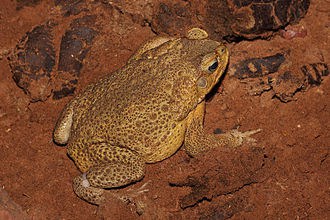Type the name of the breed you're looking for below
[wpdreams_ajaxsearchlite] Don't see the breed your're looking for? Click here and let us know!
Cane Toad
| Place of Origin and Range | The Cane Toad, also known as the giant neo-tropical toad or marine toad, is a large, terrestrial true toad which is native to Central and South America, but has been introduced to various islands throughout Oceania and the Caribbean, as well as northern Australia. |
| Description | The skin of the Cane toad is dry and warty. It has distinct ridges above the eyes, which run down the snout. Individual cane toads can be grey, yellowish, red-brown, or olive-brown, with varying patterns. A large parotoid gland lies behind each eye. The ventral surface is cream-coloured and may have blotches in shades of black or brown. The pupils are horizontal and the irises golden. The toes have a fleshy webbing at their base, and the fingers are free of webbing. |
| Adult Size | Can grow to 4- 8 in ( 10-20 cm ) |
| Accommodation | These toads quickly destroy and vegetation. A terrarium with non-aromatic, dry substrate and a water dish large enough for your toad to sit in should suffice. Try and keep a basking spot 25 C or 77 F, warmer than the rest of the cage. |
| Lifespan | Can live 24 years |
| Feeding / Diet | These toads eat insects and worms, but will learn to accept pieces of floating Koi chow. Dust insects with a calcium D3 supplement before feeding once a week. |
| Other Considerations | The bacteria, which generally is the cause for “red-leg” syndrome, is found in contaminated food or water, and may also be airborne. The reddening of the amphibian's legs and abdomen is due to the dilatation (or stretching) of the capillaries under its skin. The amphibian may even begin bleeding from the skeletal muscles, tongue or “third eyelid,” a protective skin fold under an amphibian's eyes. Consult a Vet right away if your pet shows symptoms. |



